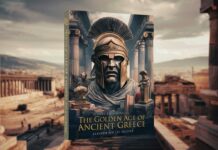The Timeless Majesty of the Acropolis
A Pinnacle of Ancient Architecture
The Acropolis, an architectural marvel, stands as a testament to ancient Greek civilization and its unparalleled contributions to art and culture. Nestled high above the city of Athens, this historical site is not just a collection of structures; it’s a symbol of the dynamic spirit and intellectual prowess that defined ancient Greece. Among its most celebrated structures is the Parthenon, a temple dedicated to Athena, the goddess of wisdom.
Birthplace of Democracy
The Acropolis looms large not just in terms of architecture but also as a cradle of democracy. In its shadow, the principles of democracy flourished, influencing governance systems across the globe. Citizens would gather in public spaces surrounding the Acropolis, exchanging ideas and debating the critical issues of their time, embodying the essence of civic engagement.
Architectural Ingenuity
The design and construction of the Acropolis showcase remarkable engineering techniques that were ahead of their time. The Parthenon, renowned for its Doric columns, utilizes optical illusions to create a visual harmony that captures the viewer’s imagination. From the hallowed halls to the intricate friezes, every element of the Acropolis speaks of meticulous craftsmanship and artistic vision.
A Canvas of History
Standing since the 5th century BCE, the Acropolis has withstood the test of time and the ravages of various conflicts. Each era has left its mark, from the Byzantine to the Ottoman periods, transforming the site yet never detracting from its significance. This continuous blend of histories only enhances the Acropolis’s status as a living museum of human achievement.
Sacral Space
The Parthenon is the jewel of the Acropolis, enriching the landscape with its grand appearance. Dedicated to Athena Parthenos, it once housed a colossal statue of the goddess made of gold and ivory. The temple was not merely a place of worship; it represented Athenian power, artistic excellence, and devotion, captivating all who sought its blessing.
Art in Stone
Artistry flourishes at the Acropolis, with its sculptures and reliefs telling tales of myth, heroism, and society. The Elgin Marbles, once part of the Parthenon, exhibit an unparalleled level of skill and an understanding of the human form, elevating the narrative of the Acropolis beyond mere stone into the realm of the extraordinary.
Strategic Location
Perched atop a rocky outcrop, the Acropolis was strategically chosen for its defensive advantages. This elevated position allowed inhabitants to oversee their surroundings, offering protection from potential invaders. The choice of location reflects the Greeks’ foresight and their commitment to safeguarding their culture and values.
Cultural Hub
Throughout history, the Acropolis has acted as a focal point for culture and worship. Alongside the Parthenon, other structures such as the Erechtheion and the Temple of Athena Nike contributed to its rich cultural tapestry. These temples housed rituals and celebrations, creating an atmosphere charged with spiritual significance and civic pride.
UNESCO World Heritage Site
Recognizing its outstanding universal value, UNESCO designated the Acropolis as a World Heritage Site in 1987. This acknowledgment emphasizes the importance of both preserving the site and educating future generations about its role in shaping human civilization. Efforts continue to monitor and maintain this beacon of history.
Challenges of Preservation
Despite its exceptional status, the Acropolis faces ongoing threats from pollution, tourism, and natural erosion. Complex restoration efforts aim to maintain its structural integrity and aesthetic appeal, ensuring that future visitors can appreciate its grandeur. The challenge of preserving the Acropolis is a constant reminder of our responsibility to safeguard historical treasures.
An Iconic Legacy
The influence of the Acropolis extends far beyond Greece. Its architectural and artistic elements have inspired countless buildings, artworks, and cultural movements around the world. The ideals embodied in the Acropolis—beauty, strength, and civic responsibility—continue to resonate, reminding contemporary society of the values we can learn from the past.
Bridging the Past and Present
Today, the Acropolis serves as a bridge connecting us to an ancient world filled with innovation and creativity. It invites visitors to reflect on the journey of humanity and the lessons embedded in its stones. As we walk among these ruins, we’re urged to consider how our own actions can influence the future.
A Year-Round Attraction
The Acropolis earns its place in the spotlight all year, drawing millions from every corner of the globe. Whether bathed in the golden light of dawn or illuminated under a starlit sky, the site never fails to enchant. Educational programs and guided tours enrich the experience, fostering an appreciation for the complexities of ancient Greek life.
The Endless Allure
In conclusion, the Acropolis stands as a captivating symbol of Greece’s rich heritage and enduring legacy. Its grandeur, interwoven with the threads of history and culture, continues to inspire awe and fascination. The story of the Acropolis is not merely a recounting of the past; it is a reminder of the beauty and significance of human achievement that transcends time.
In a world filled with change, the Acropolis remains steadfast, a beacon of inspiration, inviting us to explore the depths of our history and the heights of our aspirations.




















